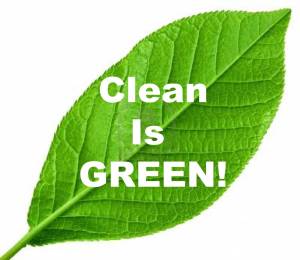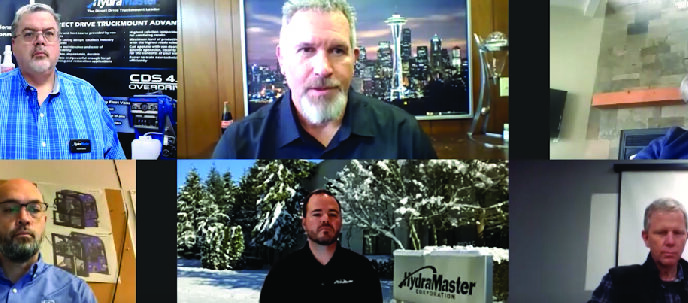What should professionals know about chemistry to decide whether or not to buy a “green” product?
You have to start by doing something that the so called “experts” have not been able to agree upon themselves; i.e., decide what the definition of green is. What is a green chemical and how is the green being measured? Is it what kind of environmental footprint its use leaves on the outdoor environment? Is it how it makes the indoor environment safer? Many look at green as a measure of sustainability, and the use of renewable resources. Others focus on the packaging the chemical is in, and how it comes from recycled materials or will be recycled. Does the use of the ingredient reduce the use of resources? Is anyone measuring the health impact of these new ingredients on the occupants of the home or the business, or the cleaning technician who uses them every day? Most of all, do they work? Do they clean the surface quickly and effectively without causing any harm to the construction and texture of the surface? Who is measuring that? While the easy answer here is to tell them to only buy third party “certified green” cleaning products that have been evaluated, tested, and approved by organizations like Green Seal or the EPA’s Safer Choice Program (formerly Design for Environment program) (https://www.epa.gov/saferchoice), the truth is that it is a bit more complicated than that. There is no certifying body I am aware of that considers all of the above stated potential measurements of green in their product certification process. In fact, they don’t even always agree on what constitutes green within each measurement. For example, there are petroleum derived products that qualify as green ingredients. Isn’t the use of petroleum using up non-renewable resources? On the flip side of that, D’Limonene is a natural solvent that is derived from the peel of oranges and other citrus fruits. How natural and sustainable can something be? Yet, most third party certification programs do not recognize D’Limonene as a “green” ingredient. Finally, I always think about what an industry friend told me many years ago. Dr. Eugene Cole is a Professor of Environmental Health Sciences at Brigham Young University. When he was assisting Dr. Michael Berry in groundbreaking studies on the impact of cleaning on the “healthfulness” of the indoor environment, I asked him about what at the time was the “hot” new green ingredient, he stated, “If we are truly dealing the development of new chemistry, how do you do a comprehensive long term health effects study on the impact of a new chemical in the short term?”
I am often asked why I think that the buying of “certified green” cleaning solutions has not taken on as strong of a hold in the professional carpet cleaning industry as it has in the “jan -san” world. I think the answer for this is actually quite simple. The majority of professional carpet cleaner’s customers are residential. There is no doubt that some residential households are certainly paying strict attention to the use of “green” chemicals in their home. However I think the trust relationship that develops between a trained, certified professional carpet cleaner and his/her repeat residential customer includes the idea that there is an assumption that the cleaner will make the safest and best choices for what chemicals are brought into the home. With a majority of residential customers, they lean on the professional cleaner to know what the “right thing” to do is.
-san” world. I think the answer for this is actually quite simple. The majority of professional carpet cleaner’s customers are residential. There is no doubt that some residential households are certainly paying strict attention to the use of “green” chemicals in their home. However I think the trust relationship that develops between a trained, certified professional carpet cleaner and his/her repeat residential customer includes the idea that there is an assumption that the cleaner will make the safest and best choices for what chemicals are brought into the home. With a majority of residential customers, they lean on the professional cleaner to know what the “right thing” to do is.
While many professionals state their preference to keep using an “old favorite” cleaning solution, what they may not realize is that fundamental ingredients within some of the “old favorites” have already changed. As the performance of “green rated” ingredients have greatly improved over the last 10 years, many formulators have already switched from a conventional ingredient to a green one. After all, it just makes sense if a green rated ingredient works just as well or better and is cost-effective, why would a progressive formulator not use more “green rated” ingredients in their formulations? Essentially, as new innovations in green chemistry are developed, cleaners will use more and more cleaning solutions that contain a large percentage of or that totally contain “green” ingredients. They cleaner may be “going green” without the realization that it is happening. The cost of third party certification of a green chemical in a small industry like ours may prevent companies from making a “green” claim on the label, but make no mistake, most products are moving toward being “greener”.
I think the answer lies in working with a reputable chemical formulator and manufacturer who can readily identify which of their cleaning solutions meets the highest level of the greatest number of “green” measurements. If a professional cleaner wants to go green, simply ask for assistance. One caveat here, when cleaning some commercial buildings, especially government buildings, cleaners will often be asked to bid with and specify the use of a specific third party green certified product. My advice is to use a product that meets the criteria as specifically as possible. If the cleaning company itself is LEEDS Certified, then they should use chemicals that meet the provisions of that certification. Once again, simply identify a chemical manufacturer that you trust and ask. Just last week, I talked to a customer who needed a specific EPA FIFRA regulated disinfectant for a job. Since our company does not make one, I gave him the name of a product and the reputable competitor he could purchase it from.
HydraMaster has a complete line of products that are manufactured utilizing ingredients recognized as “green.” These include products that have earned our prestigious SafeClean designation, which was initiated back in 1991 long before Green became a buzzword. SafeClean™ is HydraMaster’s long time trusted designation for cleaning solutions formulated with the latest technology in environmentally preferable “green” technology. SafeClean designated formulations meet or exceed industry ingredient guidelines for green cleaning solutions. The SafeClean designation goes well beyond traditional definitions of what a green formula should be like. It takes into consideration utilizing sustainable and renewable ingredients, environmental and health impact footprints on the indoor and outdoor environment, and perhaps the most important consideration of all- removing and extracting the soil from the surface being cleaned.
These products include Release with OxyBreak Carpet Prespray, RinseFree with OxyBreak Carpet Extraction Detergent, HydraFree Carpet Cleaning Solution, and ZipDri Encap TS Encapsulation Cleaner.
Tags: environment, green, HydraFree Carpet Cleaning Solution, Release with OxyBreak Carpet Prespray, RinseFree with OxyBreak Carpet Extraction Detergent, SafeClean, ZipDri Encap TS Encapsulation Cleaner





